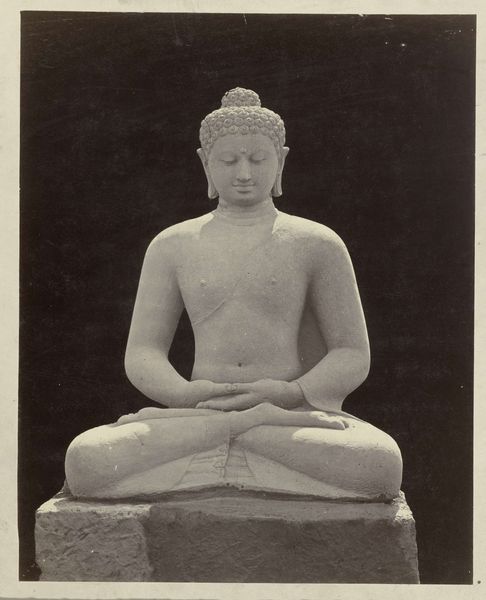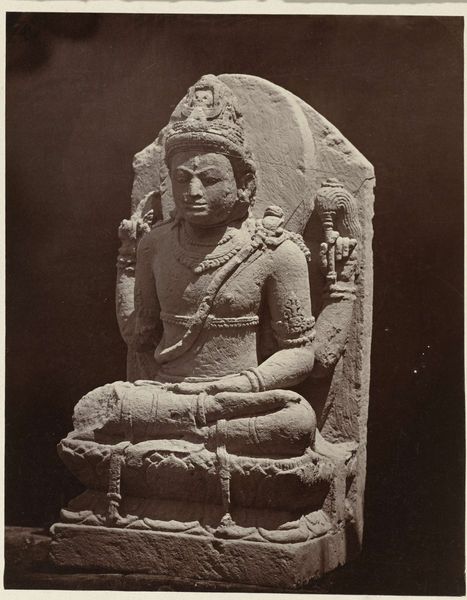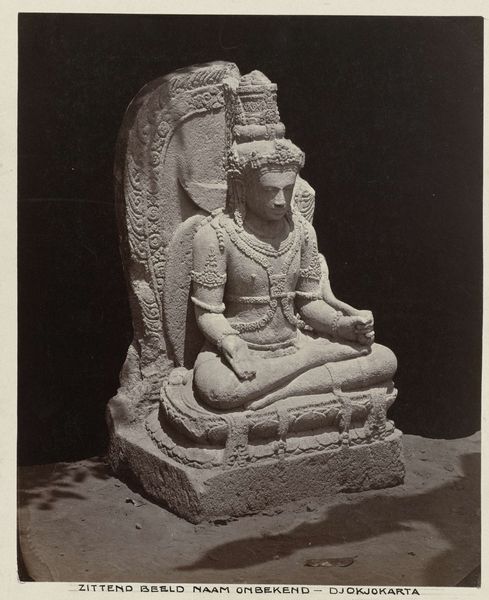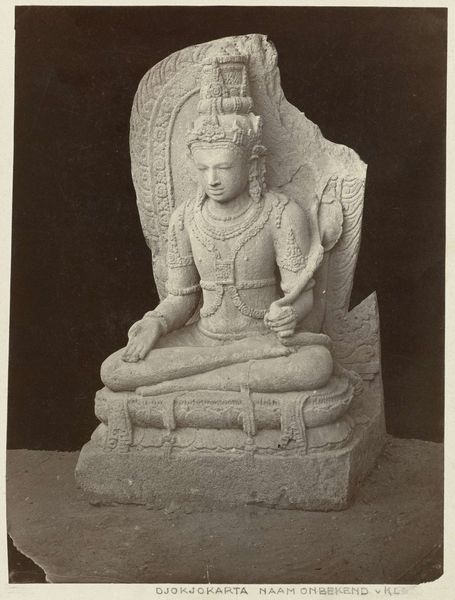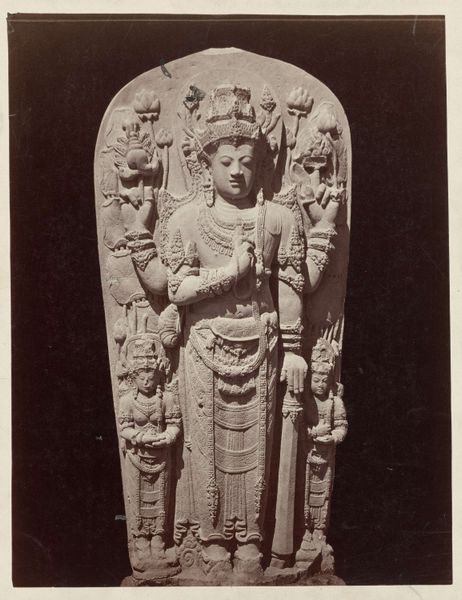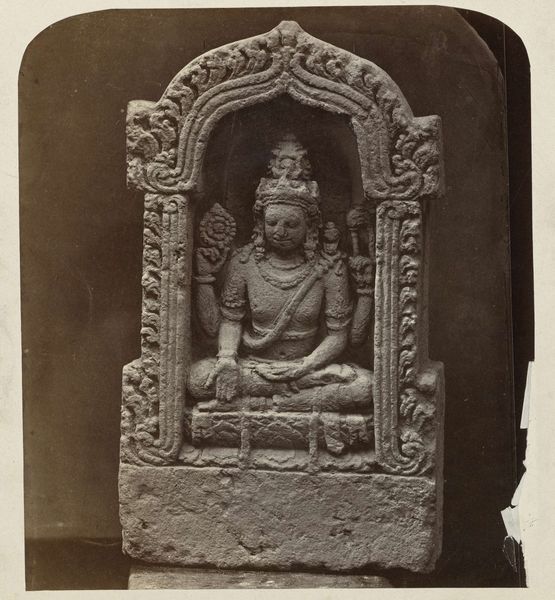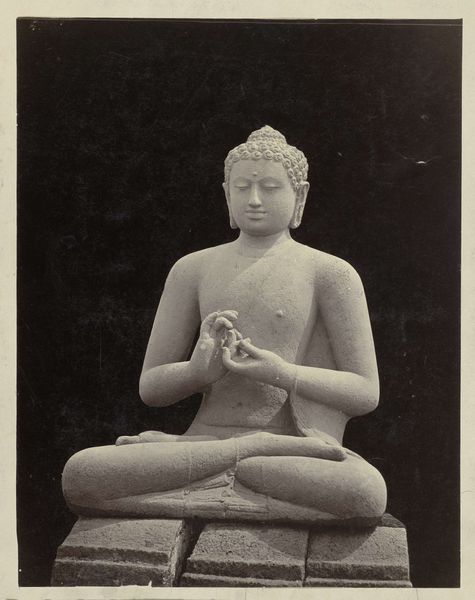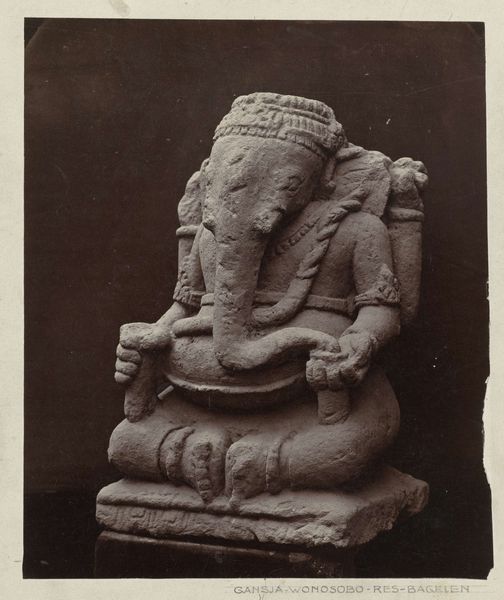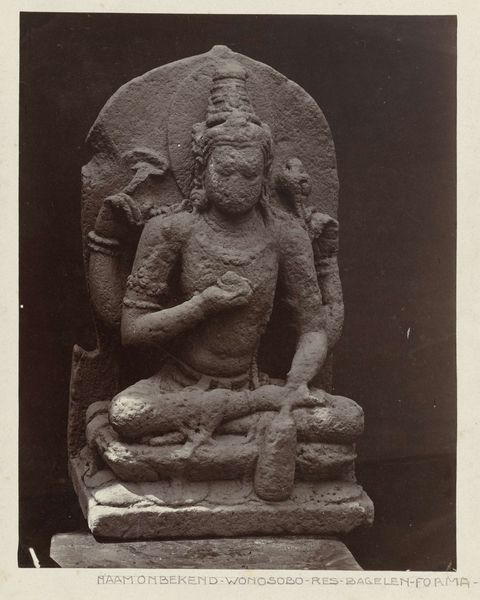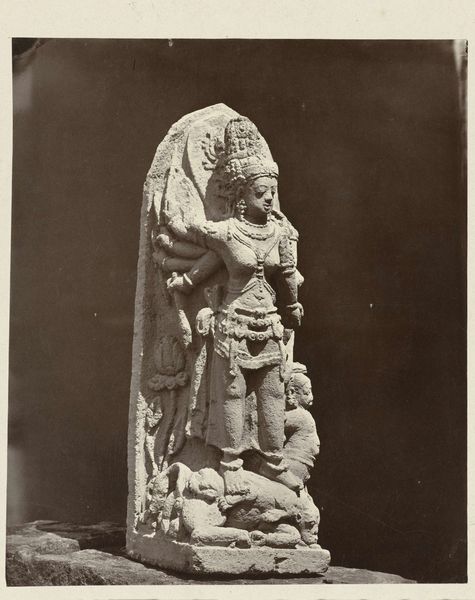
Djokjokarta (Klaring) (r. Djokjokarta) Bodhisattva Avalokiteshvara displaying the varadamudra, probably from Candi Plaosan (Former Klaring collection). Yogyakarta, Yogyakarta district, D.I. Yogyakarta province, 9th century. Possibly 1865 - 1867
0:00
0:00
sculpture
#
sculpture
#
asian-art
#
figuration
#
ancient-mediterranean
#
sculpture
Dimensions: height 260 mm, width 210 mm
Copyright: Rijks Museum: Open Domain
Curator: Just look at the quiet stillness emanating from this photo of an Avalokiteshvara statue. The figure practically hums with ancient patience. Editor: I think the serenity comes across in this photograph. Before we delve deeper, who made this and where does it come from? Curator: It's a photograph taken, probably between 1865 and 1867, by Isidore Kinsbergen, and it documents an ancient sculpture—specifically, Djokjokarta (Klaring) a Bodhisattva Avalokiteshvara. This bodhisattva, in stone, shows the varadamudra, the gesture of granting wishes or blessings. Likely the statue comes from Candi Plaosan, which is near Yogyakarta, Indonesia. It dates to the 9th century. Editor: It's fascinating how a photographic image can bring us so close to a sculpture so physically removed from us in time and space. This work reminds me of power relations embedded within colonialism that used photography for classifying and cataloging the objects deemed 'artistic.' In cases like this, doesn't photography, from its origins, frame ancient Javanese sculptures for foreign audiences and European imperial narratives? Curator: I can see how one can consider that this photographer frames it as a trophy, in a sense. But, when I look, the composition feels like an attempt to understand the power of the sculpture rather than just "capture" it. The use of black, in the background, invites us to see the Avalokiteshvara not as a conquered treasure, but a potent entity in its own right. There's something incredibly potent, even fragile, about the light Kinsbergen chose here. It makes it feel very personal. Editor: And I notice how photography here enables the reproduction and circulation of Asian art, allowing a broader audience to appreciate its beauty while shifting its original meaning. What do you think? Curator: Oh absolutely! Its cultural resonance has always traveled outside Candi Plaosan. This image offers, or perhaps invents, a certain type of intimacy. So in a way, perhaps it has done its job, all these years later. Editor: Food for thought indeed! Thank you.
Comments
No comments
Be the first to comment and join the conversation on the ultimate creative platform.


